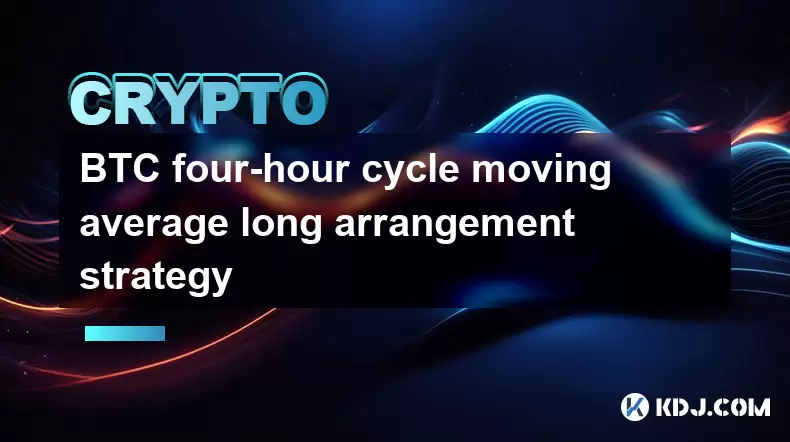-
 Bitcoin
Bitcoin $116300
2.01% -
 Ethereum
Ethereum $3815
5.35% -
 XRP
XRP $3.071
4.46% -
 Tether USDt
Tether USDt $1.000
0.02% -
 BNB
BNB $776.2
1.67% -
 Solana
Solana $173.0
5.70% -
 USDC
USDC $0.9999
0.00% -
 TRON
TRON $0.3389
1.14% -
 Dogecoin
Dogecoin $0.2125
5.92% -
 Cardano
Cardano $0.7627
5.16% -
 Hyperliquid
Hyperliquid $39.00
4.42% -
 Stellar
Stellar $0.4122
5.07% -
 Sui
Sui $3.654
7.22% -
 Chainlink
Chainlink $17.31
5.47% -
 Bitcoin Cash
Bitcoin Cash $582.2
4.28% -
 Hedera
Hedera $0.2521
3.53% -
 Ethena USDe
Ethena USDe $1.001
0.01% -
 Avalanche
Avalanche $22.77
3.47% -
 Litecoin
Litecoin $119.6
2.53% -
 UNUS SED LEO
UNUS SED LEO $8.944
-0.49% -
 Toncoin
Toncoin $3.288
3.95% -
 Shiba Inu
Shiba Inu $0.00001261
3.78% -
 Uniswap
Uniswap $10.12
5.80% -
 Polkadot
Polkadot $3.761
4.23% -
 Dai
Dai $1.000
-0.01% -
 Monero
Monero $285.1
-2.37% -
 Bitget Token
Bitget Token $4.387
1.43% -
 Cronos
Cronos $0.1476
5.88% -
 Pepe
Pepe $0.00001080
4.75% -
 Ethena
Ethena $0.6374
11.58%
BTC four-hour cycle moving average long arrangement strategy
The BTC four-hour cycle moving average long arrangement strategy uses 50, 100, and 200-period SMAs to signal bullish trends for entering long positions in Bitcoin trading.
Jun 04, 2025 at 05:56 am

Introduction to BTC Four-Hour Cycle Moving Average Long Arrangement Strategy
The BTC four-hour cycle moving average long arrangement strategy is a technical analysis method used by traders to identify potential long entry points in the Bitcoin market. This strategy relies on the alignment of multiple moving averages on a four-hour chart to signal when the market might be entering a bullish trend. By understanding how to interpret these signals, traders can make more informed decisions about when to enter long positions. In this article, we will delve into the specifics of this strategy, including how to set up the necessary indicators, how to interpret the signals, and how to execute trades based on these signals.
Setting Up the Moving Averages on a Four-Hour Chart
To implement the BTC four-hour cycle moving average long arrangement strategy, you need to set up multiple moving averages on your trading platform. Typically, traders use the following moving averages:
- 50-period simple moving average (SMA)
- 100-period SMA
- 200-period SMA
Here are the steps to set up these moving averages on a four-hour chart:
- Select the four-hour time frame on your trading platform.
- Add the 50-period SMA to your chart. This can usually be done by selecting "Moving Average" from the indicator menu, setting the period to 50, and choosing "Simple" as the type.
- Add the 100-period SMA following the same process but setting the period to 100.
- Add the 200-period SMA by setting the period to 200.
Once these moving averages are added to your chart, you will be able to see how they interact with each other and with the price of Bitcoin.
Interpreting the Long Arrangement Signal
The core of the BTC four-hour cycle moving average long arrangement strategy is the alignment of the three moving averages. A long arrangement signal is generated when the following conditions are met:
- The 50-period SMA is above the 100-period SMA.
- The 100-period SMA is above the 200-period SMA.
When these conditions are satisfied, it suggests that the market is in a bullish trend, and it may be a good time to enter a long position. Traders should look for additional confirmation from other indicators or price action before entering a trade.
Executing a Long Trade Based on the Long Arrangement Signal
Once a long arrangement signal is identified, traders need to execute the trade effectively. Here are the steps to follow:
- Wait for a bullish price action confirmation. This could be a bullish candlestick pattern, such as a hammer or engulfing pattern, that forms near the moving averages.
- Set your entry point. Enter the trade once the bullish confirmation is observed, and the price is above the 50-period SMA.
- Set your stop-loss. Place the stop-loss below the recent swing low or below the 200-period SMA, whichever is lower, to manage risk.
- Set your take-profit. Determine your take-profit level based on your risk-reward ratio and the potential resistance levels.
Managing the Trade and Exiting
Managing a trade based on the BTC four-hour cycle moving average long arrangement strategy involves monitoring the position and adjusting as necessary. Here are some guidelines for managing and exiting the trade:
- Monitor the moving averages. If the 50-period SMA crosses below the 100-period SMA, it may be a sign to exit the trade, as it indicates a potential shift in the trend.
- Adjust stop-loss. As the trade moves in your favor, consider trailing the stop-loss to lock in profits and reduce risk.
- Exit the trade. Close the trade at your predetermined take-profit level or if the market conditions change and the long arrangement signal is no longer valid.
Risk Management in the BTC Four-Hour Cycle Moving Average Long Arrangement Strategy
Effective risk management is crucial when using the BTC four-hour cycle moving average long arrangement strategy. Here are some key principles to follow:
- Use appropriate position sizing. Only risk a small percentage of your trading capital on each trade to avoid significant losses.
- Diversify your trades. Do not rely solely on this strategy; consider using other strategies and trading different assets to spread risk.
- Keep emotions in check. Stick to your trading plan and avoid making impulsive decisions based on fear or greed.
Frequently Asked Questions
Q: Can this strategy be used on other cryptocurrencies besides Bitcoin?
A: Yes, the BTC four-hour cycle moving average long arrangement strategy can be applied to other cryptocurrencies. However, the effectiveness may vary depending on the liquidity and volatility of the specific cryptocurrency. Always test the strategy on historical data before using it in live trading.
Q: How often should I check the four-hour chart for signals?
A: It is recommended to check the four-hour chart at least twice a day, ideally at the start and end of your trading session. This allows you to stay updated on any potential long arrangement signals and execute trades accordingly.
Q: What other indicators can complement this strategy?
A: Other indicators that can complement the BTC four-hour cycle moving average long arrangement strategy include the Relative Strength Index (RSI) for overbought/oversold conditions, the Moving Average Convergence Divergence (MACD) for trend confirmation, and volume indicators to gauge market interest.
Q: Is this strategy suitable for beginners?
A: While the BTC four-hour cycle moving average long arrangement strategy is relatively straightforward, it may not be suitable for beginners due to the need for disciplined risk management and the ability to interpret multiple indicators. Beginners should start with simpler strategies and gradually move to more complex ones as they gain experience.
Disclaimer:info@kdj.com
The information provided is not trading advice. kdj.com does not assume any responsibility for any investments made based on the information provided in this article. Cryptocurrencies are highly volatile and it is highly recommended that you invest with caution after thorough research!
If you believe that the content used on this website infringes your copyright, please contact us immediately (info@kdj.com) and we will delete it promptly.
- BlockchainFX, Bitcoin Swift, Crypto Presales: What's the Hype?
- 2025-08-07 19:10:13
- SHIB Community at Crossroads: Shytoshi Kusama's Leadership Under Scrutiny as Elections Loom
- 2025-08-07 18:30:13
- IREN Overtakes: A New King in the Bitcoin Miner Hashrate Race?
- 2025-08-07 16:31:29
- Memecoins Mania: Whales Eye Pepe Dollar (PEPD) as Bonk Cools Off, While MoonBull Hogs the Spotlight!
- 2025-08-07 16:51:17
- Unilabs, PEPE, and Investment Risk: Navigating the Crypto Hype
- 2025-08-07 16:31:29
- Meme Coin Mania: Rug Pulls, CZ-Inspired Tokens, and the Wild West of Crypto
- 2025-08-07 16:57:14
Related knowledge

Can the Bitcoin protocol be changed?
Aug 07,2025 at 01:16pm
Understanding the Bitcoin ProtocolThe Bitcoin protocol is the foundational set of rules that govern how the Bitcoin network operates. It defines every...

What are some common misconceptions about Bitcoin?
Aug 07,2025 at 07:22pm
Bitcoin is Just Like Regular MoneyA widespread misconception is that Bitcoin functions identically to traditional fiat currencies like the US dollar o...

How does Bitcoin handle scalability issues?
Aug 07,2025 at 10:54am
Understanding Bitcoin’s Scalability ChallengeBitcoin’s design prioritizes decentralization, security, and immutability, but these principles come with...

Do you need to understand technology to use Bitcoin?
Aug 07,2025 at 06:17am
Understanding the Basics of BitcoinTo engage with Bitcoin, one does not need a deep understanding of the underlying technology, much like how individu...

Can your Bitcoins be stolen?
Aug 07,2025 at 03:28am
Understanding the Security of Bitcoin OwnershipThe decentralized nature of Bitcoin means that no central authority controls the network, placing the r...

How does Bitcoin compare to gold?
Aug 07,2025 at 03:18am
Historical Context and Origins of Bitcoin and GoldUnderstanding the comparison between Bitcoin and gold begins with their origins and historical roles...

Can the Bitcoin protocol be changed?
Aug 07,2025 at 01:16pm
Understanding the Bitcoin ProtocolThe Bitcoin protocol is the foundational set of rules that govern how the Bitcoin network operates. It defines every...

What are some common misconceptions about Bitcoin?
Aug 07,2025 at 07:22pm
Bitcoin is Just Like Regular MoneyA widespread misconception is that Bitcoin functions identically to traditional fiat currencies like the US dollar o...

How does Bitcoin handle scalability issues?
Aug 07,2025 at 10:54am
Understanding Bitcoin’s Scalability ChallengeBitcoin’s design prioritizes decentralization, security, and immutability, but these principles come with...

Do you need to understand technology to use Bitcoin?
Aug 07,2025 at 06:17am
Understanding the Basics of BitcoinTo engage with Bitcoin, one does not need a deep understanding of the underlying technology, much like how individu...

Can your Bitcoins be stolen?
Aug 07,2025 at 03:28am
Understanding the Security of Bitcoin OwnershipThe decentralized nature of Bitcoin means that no central authority controls the network, placing the r...

How does Bitcoin compare to gold?
Aug 07,2025 at 03:18am
Historical Context and Origins of Bitcoin and GoldUnderstanding the comparison between Bitcoin and gold begins with their origins and historical roles...
See all articles

























































































